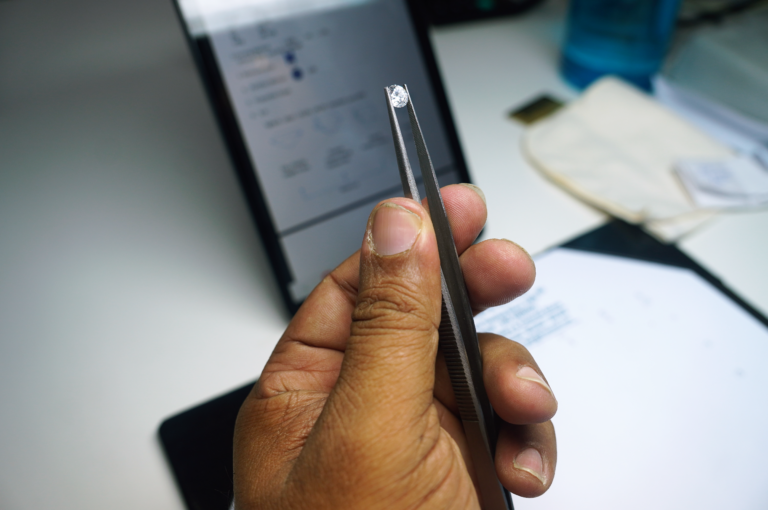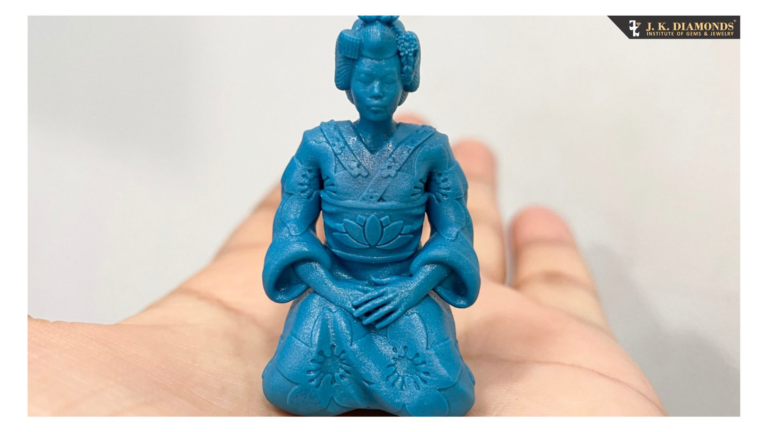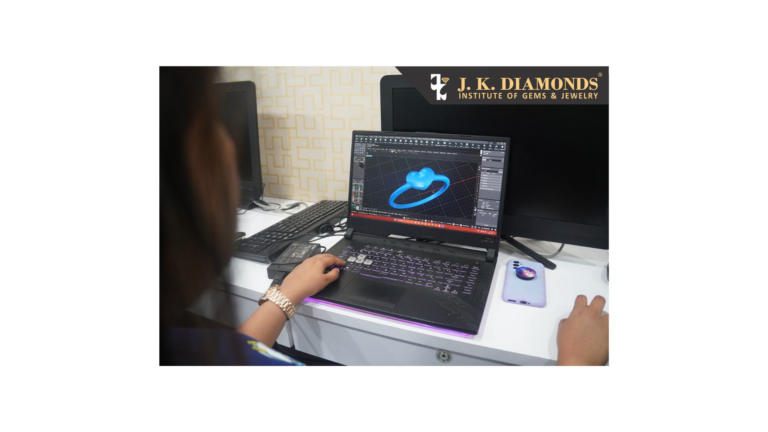Is your birthday in September? Then you’re a lucky one because this blue stone is your birthstone!
Found in various colors like pink, yellow and green, Sapphire is most desired for its pure and rich blue color. This September birthstone is believed to protect your loved ones from harm and also signifies loyalty and trust, serving as the perfect gift for your dear ones!
Introduction and Colour
When you hear the word “Sapphire,” one can picture a gorgeous violet-blue gemstone. After all, “Sapphire” in Greek means “blue.” The more saturated its violet-blue color with some hints of velvety transparency, the rarer it is, and more pricey.
However, blue is not the only color that Sapphires can possess. They also appear in yellow, pink, orange, violet and peach colors. The rarest and priciest Sapphire is the Padparadscha – a pink-orange dance of colors that mimic a tropical sunset. This gemstone is quite the poetry, isn’t it? It’s also the most sought-after Sapphire by collectors, becoming one of the most expensive gemstones in the world.

Formation and chemical composition
Sapphire is made up of a variety of corundum and/or aluminum oxide. Its chemical formula involves two parts of aluminum and three parts of oxygen. Its axes are arranged in a hexagonal crystal, which is a crystal of four axes. From these four axes, three are of equal length and intersect at 60 degree angles, while the remaining one is unequal in length to the others and intersects the others at a right angle.
Fun Fact: A companion corundum of Sapphire is Ruby! If the rubies corundum is pink, then according to the United States Federal Trade Commission, it will be required to sell the stone as a Sapphire.
History of Sapphires
For many centuries, Sapphire has dominated the style of the elites for its extraordinary color. It has been traditionally recognized as the symbol of royalty, class, sincerity and loyalty. Even today, it’s the most sought-after stone for engagement rings. This September birthstone symbolises loyalty and trust.
It began to be prized by the elite as far back as 800 BC. Rulers of Ancient Persia believed that the sky was blue because it was painted by blue Sapphires. Since then, it was seen as a holy stone and gifted to the catholic churches, as well as the ancient rulers for its belief that it protects the wearer from harm. Later, in the 12th Century, it began to grow a reputation for itself as an appropriate stone for Ecclesiastical rings. The Cingalese held the star sapphire as a protector and guard against witchcraft. The great Oriental traveler, Sir Richard Francis Burton, possessed a large sapphire that he called his “talisman,” for he believed that the stone provided him with good horses and trade.
To this day, Sapphire continues to dominate the market for its sentiment and beauty.
Sapphire Varieties
These are the following types of Sapphires discovered so far:
- Blue Sapphire – easily the most popular in the market. Its hues range from pale baby blue to intense royal blue, which is the most priced. There’s a cornflower blue variation as well which is well-liked for it shares similarities with the blue hue of a cornflower.
- Pink Sapphire – Also considered as a lighter ruby, this Sapphire’s hues can range from baby pink to an intense magenta. It’s the second-most popular sapphire for its feminine shades.
- Yellow Sapphire – this tone ranges from greenish-yellow to orangish-yellow, with bright canary yellow being the most loved hue by collectors.
- Orange Sapphire – considered to resemble a setting sun, this exotic color ranges from deep golden to mandarin to deep orange in hues. Elements like chromium and iron give it its distinct color and uniqueness.
- Teal Montana Sapphire – originating from Montana, USA, this stone has a spectrum of hues like medium blue to green, but it’s the teal color that is most sought-after. Its strong durability and symbolism is what makes it so popular around the world.
- Green Sapphire – the green of this stone is a glittering beauty, which is what makes it so rare and popular.
- Padparadscha Sapphire – one of the rarest sapphires in the world, its name is derived from the Sinhalese word for aquatic lotus blossoms for their distinct salmon color. This gemstone is a combination of two colors – pink and orange; the colors of a perfect sunset.
- Star Sapphire – shaped like a six-rayed star, Star Sapphires are a treat to possess due to their uniqueness and beauty.
- Parti-Colored Sapphire – A combination of different colors, this jewel stone possesses the ability to change its color based on the light that falls on it. It can go from violet-purple to reddish-purple, depending on the light shone upon it.

Importance and Health Benefits of Sapphire in Astrology
Astrologers associate Sapphire with the planet Saturn. Since Saturn is considered to rule the nervous system, Sapphire is worn to help in handling nerve related tensions, neurological disasters etc.
It is also used for clarity of the mind and to strengthen creativity and imagination, becoming a helpful companion for people in the creative field.
In Vedic scripts, Sapphire unblocks the Ajna chakra, which opens up the pituitary gland so that a healthy hormonal flow is achieved in the body. It also helps with the Crown chakra, balancing the cosmic energies surrounding us.

Physical and Optical Properties of Sapphire
Being a type 2 clarity, Sapphire has an opaque transparency with a refractive index of 1.762-1.770. It’s hardness stands at a 9, an impressive number on the Mohs Scale of hardness. It has a gravity of 3.950-4,100. Its luster is bright and virtuous, with inclusions like silk, rutile, boehmite, apatite crystals etc. There is no cleavage, and its fracture is Conchoidal.
Demand and Scope
The Sapphire is well-loved in India. A Blue Sapphire’s price can range from Rs. 1000 per carat to Rs. 2,50,000 per carat, depending on the shape, clarity, uniqueness etc. of the stone.
Famous Sapphires
The Blue Belle Of Asia is the most expensive blue sapphire in the world. This Ceylon-discovered beauty is a 392.52-carat gemstone that was sold for a whopping $17,305,996 at Christie’s Geneva in November 2014.

Identification of Sapphire
For practical identification of Sapphire, click on the link below.
Treatments
The most common form of treatment is heat treatment, as it enhances the color and clarity of a sapphire. Almost all marketplace sapphires have been thermally heated in furnaces, with temperatures reaching as high as 1700 degrees Celsius. Such a treatment can make the palest of stones come alive with color, making their value soar higher in the market.
Pricing
Color and size/weight is the deciding factor when it comes to determining the price of a Sapphire. Beyond color, the clarity & cut details need to be assessed. A Sapphire stone can always be re-cut, so clarity of the Sapphire seems to be more important.
The closer a sapphire is pure blue, the better it is. But saturation is important too. The top sapphires reach vivid saturation (pure royal blue) as most of the gems on the market are grayish. The tone is another important consideration.
For learning pricing of Sapphire, contact 9619057706 or click here




